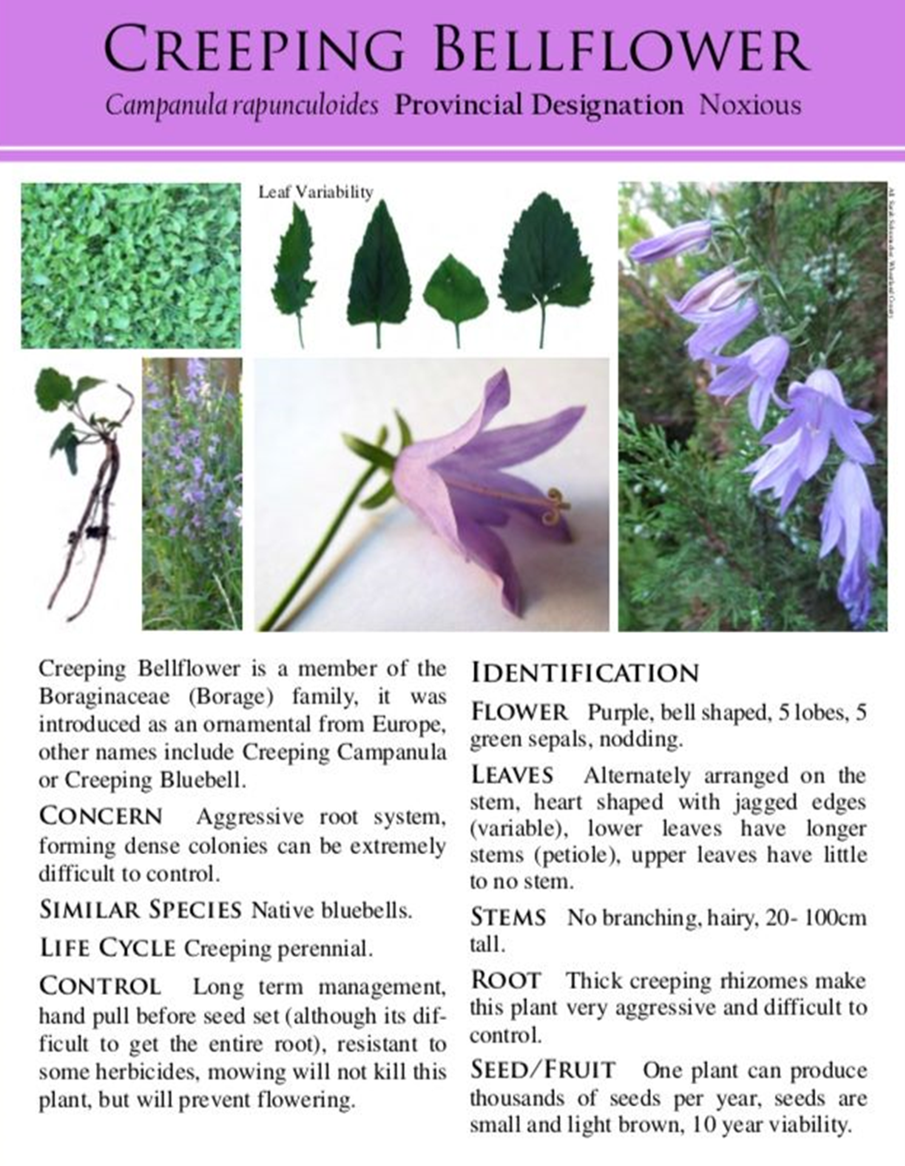You might have noticed the striking blue-purple flowers of the Creeping Bellflower adorning our community spaces and perhaps even your gardens. While visually appealing, it’s important to share that the City of Calgary has classified the Creeping Bellflower (Campanula rapunculoides) as an invasive species that can aggressively invade lawns and gardens.
Why is Creeping Bellflower Considered Invasive?
Despite its beauty, the Creeping Bellflower is a master of survival and spread. It competes aggressively with native plants for resources, spreading both by seeds and an extensive root system that makes it difficult to eradicate once established. This resilience, while admirable, poses a threat to our local biodiversity.
Early Detection: The best time to remove Creeping Bellflower is before it flowers and sets seeds.
Digging Out: Use a garden fork to loosen the soil and remove the entire root system. Any fragments left behind can regrow.
Disposal: Avoid composting any part of the plant. Seal it in a bag and dispose of it with regular garbage to prevent it from spreading.
Regular Monitoring: Keep an eye on the area for several months to catch any new growth early.
Friendly Reminder
While it’s important to manage invasive species like the Creeping Bellflower, it’s equally crucial to approach this task with care for our environment and each other. Chemical treatments are rarely recommended due to their potential harm to other plants and wildlife. Instead, persistent manual management is the most effective and environmentally friendly method.
Alternatives to Creeping Bellflower
Consider some of these garden selections as alternatives to creeping bell flower:
• Native and ornamental bellflowers (e.g. Carpathian harebell, Campanula carpatica)
• Penstemon ‘Pink Chablis’, Hybrid Beardtongue
• Blue Mirror Delphinium
Shari Pitka
ELM Coordinator

Click here to the Citadel Community News home page for the latest Citadel community updates.










